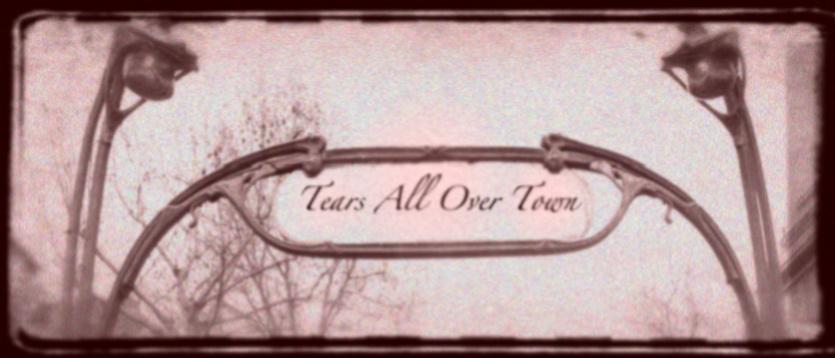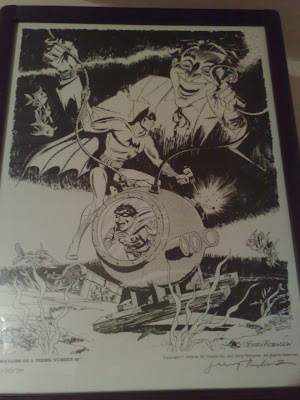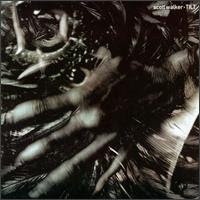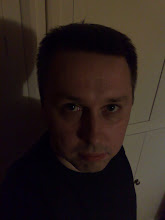
When it comes to Joss Whedon, it's hard for some of us to be impartial. Perhaps it's the feeling of being the underdog. Whedon has always been at his best when he writes about the disadvantaged in society, even if said disadvantage is being an immortal soul or the chosen one of your generation to protect the living from the dead.
I fell in love with Joss Whedon's writing within the opening seconds of Buffy The Vampire Slayer's pilot. Who could resist a perky cheerleader with a destiny, a bookish wallflower and the bumbling but lovable fool who make up the core of their self-proclaimed Scooby Gang?
Very few TV pilots have you at hello: The X-Files for sure; Twin Peaks too; but beyond that you find you have to put in a little work, have a little faith. Angel, Buffy's spin-off and former squeeze, took it's sweet time in reeling you in with its own spin on the dysfunctional family that its parent show took as its paradigm. Cordy and an Irish half-demon as Angel's side-kicks? Really? But by the time Doyle had sacrificed himself and his unrequited love for Cordy to make way for the wonderful Wesley Wyndham-Pryce, you knew you were in for the long haul, or however long the network would allow it.
Five seasons; it seems like a lot of episodes, but it also seems like a woefully short allowance for something you didn't just
like if you were a Whedon fan. No, you loved that show, possibly even more than Buffy. By the end of both, your heart had been broken several times over: for Willow when Tara is killed by a stray bullet, for Xander as he walks away from Anya on his wedding day, for Wesley when he finally wins the love of Fred, only to have it stolen away at her transformation into Illyria; and for Buffy... oh, so many times that we don't have the space for here.
And then of course, we have Firefly. We hardly had time to realise how much we loved
that band of underdogs before Fox snatched them away from us after fourteen episodes. At least we got ourselves a movie to say our goodbyes with, and it was, as they say,
shiny.
And so, here we are, a little while later, hearing the news that Joss Whedon is returning to TV and making a new show for Fox. Dollhouse. At the time of the announcement, my thoughts were (and I'm sure many shared them) A: Why go back to
that network, when Showtime or HBO would be such a better fit, and B: Dollhouse... I've seen that show already; it was called Dark Angel.
So the optimism was cautious, but it was optimism, nonetheless. Whedon says they're new people at Fox, they've changed. OK. And as for B, well, Buffy The Vampire Slayer didn't sound like that good an idea on paper, did it?
But then that cautious optimism starts to crumble. Fox have some problems with the pilot; then they can it altogether and Whedon reshoots it. Production closes down for Whedon to reassess the writing, the direction, etc. Then Dollhouse is placed onto a Friday night slot that to us none US viewers is considered the graveyard for TV shows. It all sounds strangely, depresssingly familiar.
But still... the same thing happened with Angel and Firefly, and look how they turned out.
And so to Friday, and the premiere of Dollhouse.
By this time, I admit, my initial excitement for the show had diminished somewhat. There was the sense that I didn't want to invest in something that would get cancelled a few shows in (although from what I gather, that Friday night slot is a blessing rather than a curse, having little to perform against). And the idea simply wasn't lighting a fire under me like Buffy and Angel and Firefly did. But still, as we sat down to Dollhouse, there was that flicker of excitement, bubbling away, despite myself: a new Whedon show, new characters to fall head over heels for, new Whedon dialogue to call your own and endlessly quote...
Except...
Eliza Dushku plays (let's make no bones about it) uber-hot Echo, an 'active' without any discernable memory or free will, controlled by a stealth organisation who regularly brainwash and reprogramme her to be whatever the Dollhouse's ultra-rich clients want them to be.
When we first meet Echo, she's a motorcycle racing escort in a dress so small, it's pretty much a belt. Later in the pilot, Echo is reprogrammed to be the negotiator in a child kidnap, and arrives with her new persona dressed in specs and a tight secretarial outfit. Mixed in with all this is the boss (or madame) of Dollhouse who comes on like a British dominatrix, Echo's handler of the older (but not-Giles-in-any-way-at-the-moment) persuasion who raises all the ethical and moral questions that the audience has early on, a computer geek who does the imprinting and offers the only character in the pilot to feel
Whedon-esque, a largely dull FBI agent trying to uncover Dollhouse's secrets and a slightly vague naked nutter on a coffee table looking at videos of Echo pre-mind wipe.
It's a lot to take in, and it feels deeply bogged-down with trying to get all of the pieces into place. This isn't to mention the spa-like Dollhouse itself (that looks suspiciously like Wolfram and Hart to me), filled with robot like 'actives' who sleep in strange pods and all shower together for no other reason than it's titillating to the audience.
I can forgive many of the initial faults that spring to mind in that first hour, but the main thought that springs to mind is: where in all of this is Joss Whedon? All the hallmarks of a Whedon show are largely absent. The characters are curiously uninvolving and make little or no impression. There's none of that light touch that Whedon can bring to even the darkest of stories; indeed Dollhouse is utterly devoid of humour, and it's this that jars the most. It's always been that feeling of
Whedonesque that made us fall in love with his work in the first place. Perhaps that rewrite and reshoot of the pilot left no time for fine tuning and lightness of touch.
In fact the only thing that made me feel the need to tune in next time was the fact that this is Joss Whedon. I can't imagine what the rest of the world would think. But I'm still cautiously optimistic. The prescence of so many of the Buffy alumni of writers who've returned along with Whedon, and the surefire knowledge that it
will only get better because it's Whedon will take me back week after week.
Here's hoping it finds it's legs and the network leaves it alone long enough...
 I remember when I first discovered Hard Case Crime. In 2000, when I U-turned from writing speculative (or slipstream) fiction, I turned to crime. Not literally, you understand; just crime fiction.
I remember when I first discovered Hard Case Crime. In 2000, when I U-turned from writing speculative (or slipstream) fiction, I turned to crime. Not literally, you understand; just crime fiction.










 Sprang was hired to ghost on Batman in 1941 when it was anticipated that Bob Kane would be drafted to fight in World War II, and that the then current artist Sheldon Moldoff's workload was growing increasingly large. In complete anonymity, Sprang received his Batman script, drew it and sent it off to be inked. Having no creative authority, it all seemed to imply that he would just be another Batman artist.
Sprang was hired to ghost on Batman in 1941 when it was anticipated that Bob Kane would be drafted to fight in World War II, and that the then current artist Sheldon Moldoff's workload was growing increasingly large. In complete anonymity, Sprang received his Batman script, drew it and sent it off to be inked. Having no creative authority, it all seemed to imply that he would just be another Batman artist.






























 In Manhattan and Bolivia '95 Walker returns to themes of torture and prsioners in their last moments. In Manhattan, Scalper in the lampglow and ...stickwiped shirt and his arm somewhere suggest interrogation and worse. While in Bolivia '95 (possibly referring to Che Guevara's death in Bolivia)... I journey each night like a saint to stand on this straw floor and ...The tiles speckling darker and darker around my feet both summon images of the schoolhouse where Guevara was executed. It returns to The Electrician's ambiguity of the relationship between executioner and executed.
In Manhattan and Bolivia '95 Walker returns to themes of torture and prsioners in their last moments. In Manhattan, Scalper in the lampglow and ...stickwiped shirt and his arm somewhere suggest interrogation and worse. While in Bolivia '95 (possibly referring to Che Guevara's death in Bolivia)... I journey each night like a saint to stand on this straw floor and ...The tiles speckling darker and darker around my feet both summon images of the schoolhouse where Guevara was executed. It returns to The Electrician's ambiguity of the relationship between executioner and executed.

